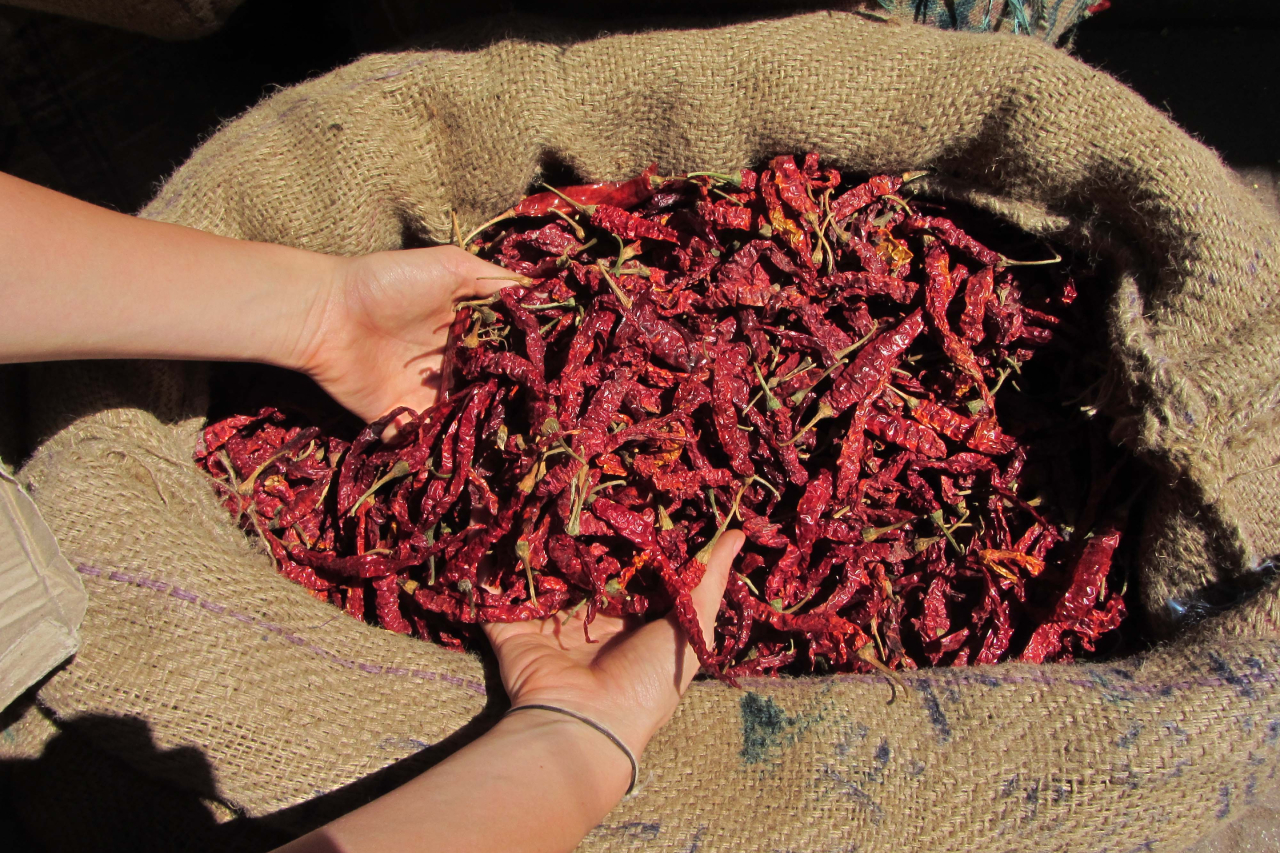India is the world’s largest producer and exporter of red chillies, and its dominance in the global market is not just due to scale but also the sophistication in its supply chain. From sun-dried farms in Guntur to fully sanitised export containers bound for Europe, the journey of Indian red chillies involves careful processing, precise packing, and efficient logistics tailored to the needs of B2B buyers. This blog offers a behind-the-scenes look at how chillies make their way from Indian farms to commercial kitchens and spice brands across the globe.
Understanding India’s Chilli Supply Chain
India cultivates a wide range of chillies, including Teja, Byadgi, 334 Sannam, and Wonder Hot, across states like Andhra Pradesh, Telangana, Karnataka, and Madhya Pradesh. These varieties differ in pungency, colour, and oil content, making them suitable for a variety of end uses in food processing, spice blends, and oleoresin extraction.
But what makes the Indian supply chain efficient for exports is not just the diversity of chilli types it’s the robust post-harvest handling and traceability practices that ensure consistent quality for buyers.
From Harvest to Processing: How Chillies Are Prepared for Export
1. Harvesting and Sorting
Chillies are usually harvested 90 to 120 days after sowing. They are picked manually, ensuring only ripe pods are selected. Sorting is done at farm or aggregator level to remove damaged or immature chillies.
2. Drying Techniques
Sun drying is the most common method in India, but it’s increasingly supported by modern drying yards with elevated racks or even solar dryers in advanced setups. This reduces moisture levels to below 10%, which is ideal for long-term storage and export.
In bulk trade, uniform drying is crucial. Batches that dry unevenly are often rejected by exporters due to fungal risks or off-flavours during transit.
3. Cleaning & Grading
Once dried, the chillies go through cleaning either manually or via machines to remove dust, stalks, or foreign matter. Advanced exporters employ gravity separators, colour sorters, and metal detectors to ensure high purity levels.
Grading is then done based on:
- Colour and sheen
- Size and length
- Skin thickness
- Heat level (measured in Scoville Heat Units)
Packing for Export: Balancing Quality with Efficiency
1. Types of Packaging
Exporters pack chillies based on the buyer’s requirements and final destination. Common packaging formats include:
- 25–50 kg PP woven bags for raw chillies
- 10-20 kg cartons for powder or flakes
- Vacuum-packed or nitrogen-flushed bags for high-value retail trade
For B2B bulk trade, breathable sacks are often preferred for whole chillies, while airtight packaging is crucial for powders to maintain freshness and prevent oxidation.
2. Labelling & Documentation
Bags and boxes are labelled with:
- Product type and grade
- Lot number
- Date of packing
- Net weight and origin
- FSSAI/Spice Board export license code
This helps maintain traceability and simplifies customs clearance, especially in regulated markets like the EU or the US.
Export Compliance and Testing
Exporters like Spices India follow rigorous testing protocols before shipment. Chillies are sent to accredited laboratories for:
- Aflatoxin levels
- Moisture content
- Pesticide residues
- Colour and pungency tests
- Microbial contamination (especially for powder)
In high-compliance markets, chillies may need to comply with ASTA standards or EU MRL (Maximum Residue Level) norms.
Shipping Methods: Ensuring Freshness Over Distance
1. Containerisation
Dry whole chillies are shipped in standard 20ft or 40ft containers, while powders may require food-grade liners or palletised loading to prevent contamination.
Shipping methods include:
- FCL (Full Container Load) for large buyers
- LCL (Less than Container Load) for smaller volumes
Temperature control is not always required for whole dried chillies but is a consideration for chilli paste, flakes, or ground forms.
2. Transit Time
- Southeast Asia & Middle East: 10–20 days
- Europe: 25–30 days
- USA: 30–40 days
Freight insurance, real-time tracking, and customs brokering are usually arranged by experienced exporters to reduce risk for B2B clients.
Private Label and Customisation Options
B2B buyers, especially spice brands, sauce companies, and wholesalers, may request:
- Custom blends of chilli powders
- Heat-adjusted formulations
- Retail-ready packaging with private label
- Labelling in regional languages
India’s export ecosystem is built to support these add-on services efficiently, particularly through facilities in Guntur, Khammam, and Navi Mumbai.
Challenges in the Export Supply Chain
- Seasonal Availability: Indian chillies are largely seasonal. Storage is needed to ensure year-round supply.
- Moisture Sensitivity: Improper packaging can lead to fungal issues, especially in humid transit conditions.
- Changing Global Regulations: Exporters need to constantly stay updated on pesticide and food safety regulations in each market.
- Price Volatility: Due to climate or demand fluctuations, chilli prices can vary significantly month-to-month.
A reliable exporter must have warehousing, multiple sourcing networks, and in-house quality teams to mitigate these issues.
Why Partnering with a Trusted Exporter Matters
When sourcing from India, B2B buyers should prioritise partners who offer:
- Transparent communication
- Third-party lab reports
- Strong logistics support
- Ability to scale supply
- Flexibility in contract terms and payment
Spicesindia, for instance, is equipped with years of experience in handling bulk exports to over 30 countries. Our strength lies not just in procurement, but in delivering consistent quality, even in large volumes.



